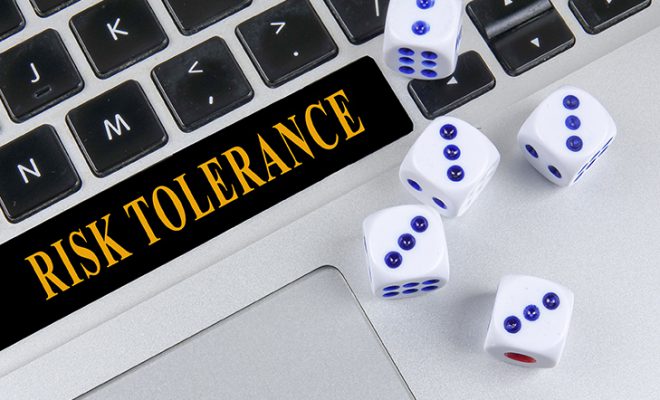How to Invest in ETFs
Diversification can be a great area to focus on when investing. Diversification refers to keeping a basket of investments like stocks, bonds, real estate, gold, currencies, derivatives, and more. This reduces risk and offers you better exposure to the market. It is also essential to diversify inside these categories by investing in different companies and industries. While a well-diversified portfolio is one that contains a mix of different investments mentioned above, there are also some financial tools that let you diversify within the same tool. One such example is an exchange-traded fund, commonly known as an ETF.
There are different types of ETFs in the market, such as gold ETFs, equity ETFs, currency ETFs, bond or fixed-income ETFs, sustainable ETFs, and more. The best ETFs to invest in out of these can depend on your investment objectives and future needs. Moreover, before you put in any money in an ETF, it is crucial to understand how to invest in ETFs. To gain better insight and knowledge on how you can invest in ETFs and maintain a healthy investment portfolio, consult with a professional financial advisor who can guide you on the same.
Keep reading to know all there is about ETFs.
Table of Contents
What is an ETF?
ETFs can offer the combined benefits of stocks and mutual funds in one investment tool. Exchange-traded funds are self-explanatory. These are bought and sold on the market just like stocks, which is why they are called exchange-traded. Moreover, these are termed a fund because they replicate a mutual fund by pooling in money and investing it further in multiple asset classes. ETFs are also known for their diversification benefits, much like mutual funds.
When you invest in an ETF, you can buy stocks and bonds of several companies at once. Each ETF has an objective and follows an underlying benchmark, sector, commodity, or asset. Similar to stocks, ETF prices also fluctuate throughout the day. This is where they differ from mutual funds, as mutual funds follow the Net Asset Value (NAV) that is determined once during the day. In addition to this, ETFs are also more liquid than mutual funds as they can be bought and sold instantly.
ETFs invest in different investments like stocks, commodities, bonds, etc. Moreover, ETFs also expose you to various industries as they concentrate on a variety and are never limited to one or a few. So, if you invest in the S&P 500 ETF, you will have exposure to all the 500 companies of the index.
There are several ETFs to invest in the United States. SPDR S&P 500 ETF was the first-ever ETF and is actively traded on the stock exchange till today. As of 2020, there were 2,204 ETFs in America.
How to invest in ETFs?
Here are the steps to invest in an ETF:
1. Get a brokerage account
ETFs can only be traded through a brokerage account. So, you would have to open one. You can compare different accounts, their features, and fees and select the one that offers the most benefits. The focus here can be to pick a cost-effective account to avoid high transaction charges.
2. Find the right ETFs
Once you have opened your brokerage account, you can start searching for and comparing the different ETFs on the stock exchange. Your brokerage account may contain different types of ETFs based on industry, risk, and more. You can shortlist a few and then invest in them. Bond ETFs may be the safest ETFs to invest in as bonds inherently carry low risk. On the other hand, equity ETFs can be high risk. However, the returns may also be inversely proportionate for both, making equity one of the best ETFs to invest in the long term.
So, make a decision after a careful assessment of your needs, risk appetite, and future goals. If you are unsure, you can also reach out to a financial advisor and get an expert’s opinion. If you are investing through a robo advisor, its algorithm may automatically select one based on your input.
3. Place the trade order
ETFs are traded like stocks for which you need to place an order. Once you have selected the ETF you wish to invest in, you can execute the trade by placing the order. Now sit back, track your investment and watch it grow.
What ETFs should I invest in?
The selection for an ETF is similar to that of any other investment. The transaction costs, performance, risk, type, etc., can together decide the ETFs you can invest in. There is no right or wrong answer here as your needs can differ from those around you. So, it may be advisable to consider the following factors when selecting an ETF:
- Trading price: The trading price is the price of the ETF. This is similar to a stock price and will determine your total investment in an ETF.
- Expense ratio: The expense ratio is the administrative cost of investing in an ETF. This can differ for passively and actively managed funds. The former may be relatively lower and the latter higher. When looking for the best ETFs to invest in, make sure to compare the expense ratios and pick a fund with the least cost.
- Commission: Apart from the expense ratios, you also have to cover the commission cost of investing in ETFs. A commission may be charged on every purchase or sale of an ETF through your brokerage account. This can vary for different accounts.
- Performance: Needless to say, the performance of an ETF is an essential thing to focus on when investing in them. While the past performance may not indicate the future performance, it can be a reflection of the fund and help you make a decision.
- Volume: The volume is the number of shares traded over a period. The higher the volume, the more popular the fund and vice versa. This can offer you a glimpse into what others are investing their money in.
- Holdings: The holdings are the companies where the ETF invests the pooled money from investors. Going through the list of holdings can give an idea of how well-diversified the ETF is.
- Dividends: ETFs may pay you a dividend. You can check the past dividends to get an idea of the future dividends.
How much to invest in ETFs per month
The value of an ETF investment can be chosen based on your total investment budget. While EFTs offer excellent diversification, they may also carry some risks. So, it may be advised to first secure your future with traditional investment methods like a 401k, Individual Retirement Account (IRA), Health Savings Account (HSA), life insurance, and others. If you do have some extra money that can be invested later, you can choose ETFs. Moreover, of late, many 401ks offer ETFs. So, if you are already investing in ETFs through your company-sponsored 401k plan, you may not invest in them separately.
There are various scenarios that can decide the value of your investment in an ETF. A financial advisor may be able to guide you in this regard.
Should I invest in mutual funds or ETFs?
There are quite a few similarities between mutual funds and ETFs. However, there are also several differences. In principle, both investment options are entirely unique and can cater to various different needs. Here are some points to keep in mind when selecting either of the two:
1. ETFs may be cheaper
ETFs have lower expense ratios and transaction costs compared to mutual funds. So, this may be more cost-effective compared to mutual funds.
2. ETFs have a lower minimum investment limit
Some mutual funds may have minimum investment requirements. This may not always be ideal for young investors who generally lack the funds to invest in high values. ETFs have no such conditions and can hence fit in any investment budget.
3. ETFs perform only as well as the index
Since ETFs follow an underlying index, asset, or commodity, their performance is limited to the performance of their benchmark. They do not outperform the index they track. However, mutual funds are actively managed and hence can offer higher returns in several cases.
4. Commission-free ETFs may not always follow the right index
With an influx of various ETFs in the market, many commission-free ETFs are tracking low-performing indices. While this may not be true for all ETFs, it is still good to check the index and then invest your money.
5. ETFs can be more flexible and liquid
An ETF can be bought and sold through your brokerage account. But mutual funds are generally purchased and redeemed through an Asset Management Company (AMC). Even though AMCs are very flexible, they do take a few days to confirm your mutual fund investment and redemption. However, ETFs can be bought and sold throughout the trading day like shares, offering a higher level of flexibility, liquidity, and speed.
6. ETFs and mutual funds can both be risky
Even though ETFs offer diversification, they can also be risky. If you select an ETF that tracks a sector, you may be exposing yourself to high risk and volatility. If the sector does not perform well, you may lose all your money. This is similar to sectoral and thematic mutual funds that can carry a lot of risks.
To maintain a well-diversified portfolio, it may be advised to invest in a combination of stocks, bonds, ETFs, mutual funds, etc. A heavy concentration in either can be harmful in the long run. However, thoughtful investments across different asset classes and investment vehicles can together offer higher returns.
Investing in ETFs vs stocks
ETFs and stocks can often confuse investors. The two are traded in a similar manner, but the similarities end there. If you are investing in stocks, you invest in stocks of particular companies. For instance, you may have 50 stocks of five companies belonging to different sectors with no connection to one another. However, an ETF will invest in companies with a similar objective, for instance, the companies of the same index or industry. Moreover, an ETF will invest in stocks of other companies. So, you will be able to invest in multiple stocks and companies at the same time.
Having said that, the similarities between stocks and ETFs include taxation, risks, and dividends. Your gains from an ETF and a stock will be taxed similarly as capital gains. Moreover, you can get dividends from stocks as well as ETFs. The risk quotient can also be high in both depending on what you choose.
To conclude
Now that you have a better idea of how to invest in ETFs, you can consider making them a part of your investment portfolio and invest in them. Remember that the ultimate allocation or concentration of your funds in an ETF will depend on your goals and budget, as well as your other investments. However, if you are uncertain of where to begin or how to choose the best ETFs to invest in, you can reach out to a professional financial advisor in your area for better guidance and assistance on the matter.
If you are looking for guidance on how to invest in ETFs and diversify your investment portfolio, use WiserAdvisor’s free advisor match service to find highly qualified and vetted fiduciary advisors who can do the same for you. Answer a few questions about yourself and get matched with 1-3 fiduciary advisors that are suited to meet your financial requirements.


















